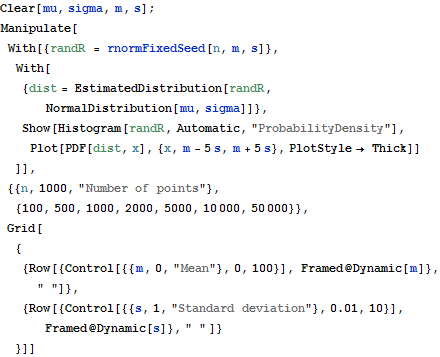Seed Random Number Generation and Visualization
| In[1]:= | X |
Generate random normally distributed numbers with a fixed seed.
| In[2]:= |  X |
| Out[2]= |
Package this as a function.
| In[3]:= |  X |
Test the function.
| In[4]:= | X |
| Out[4]= |
Since the seed is fixed, the same seed value always returns the same pseudo-random sequence.
| In[5]:= | X |
| Out[5]= |
Generate a set of random numbers.
| In[6]:= | X |
| Out[6]= |
Test them for normality with Mathematica's QuantilePlot.
| In[7]:= | X |
| Out[7]= |  |
And with EstimatedDistribution.
| In[8]:= |  X |
| Out[8]= |
Visualize the result.
| In[9]:= | X |
| Out[9]= |  |
Use the dynamic interactivity of Mathematica for data analysis. The random numbers are generated in R but analyzed and visualized in Mathematica.
| In[10]:= |  X |
| Out[10]= |  |